- Preparing the Soil for Onion Planting
- 1. Choose the Right Location
- 2. Remove Weeds and Debris
- 3. Test and Amend the Soil
- 4. Loosen the Soil
- 5. Add Fertilizer
- 6. Create Planting Rows
- 7. Water the Soil
- 8. Consider Crop Rotation
- Choosing the Right Onion Varieties
- Planting Onions at the Right Time
- Determining the Average Last Frost Date
- Considering the Onion Variety
- Planting in Spring
- Planting in Fall
- Providing Proper Care
- Conclusion
- Watering Onions Properly
- 1. Frequency of Watering
- 2. Soil Moisture
- 3. Watering Methods
- 4. Watering Depth
- 5. Time of Day
- 6. Mulching
- 7. Rainfall Considerations
- 8. Observation
- Providing Adequate Nutrients for Onion Growth
- Fertilizer Application Tips:
- Conclusion
- Controlling Weeds and Pests in Onion Beds
- Weed Control
- Pest Control
- Protecting Onions from Extreme Temperatures
- 1. Mulching
- 2. Watering
- 3. Shade cloth
- 4. Cold frames or row covers
- 5. Plant spacing
- 6. Harvesting on time
- Harvesting and Caring for Onions After Initial Growth
- Harvesting Onions
- Caring for Onions after Harvest
- “Question-Answer”
- What are the essential tasks for caring for onions during initial growth?
- How often should I water onions during their initial growth?
- What type of fertilizer should I use for onions during their initial growth?
- How can I control weeds in my onion patch?
- What are some common pests that affect onions during their initial growth?
- “Video” Complete Guide To GROWING ONIONS From Seed [BETTER Than Onion Sets]
Growing onions can be a rewarding experience, whether you are a seasoned gardener or just starting out. However, caring for onions during their initial growth stages is crucial for ensuring a successful harvest. In this complete guide, we will walk you through the essential tasks that you need to undertake to ensure that your onions thrive and produce a bountiful crop.
Planting onions: The first step in caring for onions is to plant them correctly. Onions should be planted in well-draining soil with a pH level between 6 and 7. It is essential to choose a sunny location for planting, as onions require full sun to grow properly. The soil should be prepared by removing any rocks or debris and adding organic matter such as compost or aged manure to improve fertility.
Watering: Adequate watering is crucial for the initial growth of onions. During the first few weeks after planting, onions need about 1 inch of water per week, either from rain or irrigation. It is important to water onions deeply but infrequently, allowing the soil to dry out between waterings. This promotes root growth and helps prevent diseases such as onion rot.
Weeding: Onions compete poorly with weeds, so it is important to keep the onion bed weed-free. Regularly check for weeds and remove them promptly to prevent competition for nutrients and water. Mulching can also help suppress weed growth and conserve soil moisture.
Fertilizing: Onions are heavy feeders and require a steady supply of nutrients for optimal growth. It is recommended to apply a balanced fertilizer high in nitrogen every three to four weeks during the initial growth stage. Avoid overfertilization, as it can lead to excessive foliage growth at the expense of bulb development.
Thinning: Proper spacing is essential for the development of large onion bulbs. After the onions have reached a height of about 6 inches, thin them to allow sufficient space for each bulb to grow. Generally, onions should be spaced 4 to 6 inches apart, depending on the variety. Thinning also helps improve air circulation, reducing the risk of fungal diseases.
Pest control: Onions are susceptible to various pests, including onion maggots, thrips, and onion fly. Regular monitoring is crucial for early detection and control of pests. Consider using row covers or netting to protect your onions from insect infestations. Organic pest control methods, such as the use of insecticidal soaps or neem oil, can also be effective in managing pests without resorting to harsh chemicals.
Caring for onions during their initial growth stages is essential to ensure healthy plants and a bountiful harvest. By following these essential tasks, you can provide your onions with the care they need to thrive and produce large, flavorful bulbs. With a little patience and attention to detail, you’ll be enjoying your homegrown onions in no time!
Preparing the Soil for Onion Planting
Properly preparing the soil is essential for successful onion growth. Here are a few steps to follow when getting your soil ready for onion planting:
1. Choose the Right Location
Onions thrive in well-drained soil and require full sun exposure. Choose a location in your garden that receives at least 6 hours of direct sunlight each day.
2. Remove Weeds and Debris
Before preparing the soil, remove any weeds and debris from the planting area. Weeds can compete with onions for nutrients and water, hindering their growth.
3. Test and Amend the Soil
Test your soil pH using a soil testing kit. Onions prefer a slightly acidic soil with a pH between 6.0 and 7.0. If your soil is too acidic, you can add lime to raise the pH. If it’s too alkaline, you can add sulfur to lower the pH.
Additionally, onions require well-draining soil. If your soil is heavy clay or compacted, you can improve its drainage by adding organic matter like compost or well-rotted manure.
4. Loosen the Soil
Using a garden fork or tiller, loosen the soil to a depth of at least 6-8 inches. This will help promote root development and water penetration.
5. Add Fertilizer
Onions are heavy feeders and require adequate nutrients for optimal growth. Incorporate a balanced fertilizer into the soil according to the package instructions. This will provide the necessary nutrients for the onions to thrive.
6. Create Planting Rows
Using a hoe or garden rake, create planting rows that are spaced about 12-18 inches apart. This will allow sufficient space for the onions to grow and form bulbs.
7. Water the Soil
Before planting the onions, moisten the prepared soil. This will help ensure that the soil is evenly moist and ready to support the onion plants.
8. Consider Crop Rotation
If you’ve previously grown allium crops, such as onions, in the same location, it’s advisable to practice crop rotation. Planting onions in the same spot year after year can lead to a buildup of pests and diseases. Rotate the onion crop to a different area of the garden each year to maintain soil health.
By following these steps and properly preparing the soil, you will provide your onions with the optimal conditions for healthy growth and high-quality bulbs.
Choosing the Right Onion Varieties
When it comes to growing onions, choosing the right variety is crucial for a successful harvest. There are several different onion varieties to choose from, each with its own unique characteristics and growing requirements. Here are some factors to consider when selecting the right onion variety for your garden:
- Day Length: Onions are classified into short-day, intermediate-day, and long-day varieties based on their response to daylight hours. Short-day onions require 10-12 hours of daylight to bulb, making them suitable for southern regions. Intermediate-day onions require 12-14 hours of daylight and are well-suited for central regions. Long-day onions need 14-16 hours of daylight and thrive in northern regions.
- Color: Onions come in different colors, including yellow, white, and red. Yellow onions are the most commonly grown variety and have a strong flavor. White onions have a milder taste, while red onions are sweeter and often used in salads or eaten raw.
- Storage: Some onion varieties store better than others. If you’re looking to store your onions for a long time, choose a variety known for its good storage qualities. These onions usually have a thicker skin and can last several months when properly stored.
- Growing Season: Onions have different maturation periods, ranging from short-season to long-season varieties. Short-season varieties are typically harvested within 80-90 days, while long-season varieties can take up to 120 days or more. Consider your region’s growing season and the length of time you’re willing to wait for your onions to mature.
- Disease Resistance: Some onion varieties are more resistant to common diseases and pests than others. Look for varieties that have resistance to diseases such as onion downy mildew, onion white rot, and onion thrips.
It’s important to research and choose the right onion variety that suits your growing conditions, flavor preferences, and storage needs. By selecting the appropriate variety, you’ll be well on your way to growing abundant and flavorful onions in your garden.
Planting Onions at the Right Time
Planting onions at the right time is crucial for their successful growth. The timing can vary depending on your climate and the specific variety of onion you are planting. Here are some general guidelines to help you determine the best time to plant your onions:
Determining the Average Last Frost Date
The first step in determining the right time to plant onions is to find out your average last frost date. Onions are cool-season crops and can tolerate some frost, but it’s important to avoid planting them too early when the soil is still too cold. Your local agricultural extension office or gardening resources can provide you with the average last frost date for your area.
Considering the Onion Variety

Different onion varieties have different maturity dates, which will affect the timing of planting. Before planting, check the seed packet or information from the nursery to see the recommended planting times for the specific variety you have chosen. Early-maturing onions can be planted sooner, while late-maturing onions may need to be planted later in the season.
Planting in Spring
In most regions, onions are planted in early spring or as soon as the soil can be worked. This is typically when the soil temperature reaches around 45°F (7°C) or higher. Once the soil is ready, prepare the garden bed by tilling and removing any weeds.
Plant the onion sets or transplants about 1 inch (2.5 cm) deep and space them according to the recommended spacing for the variety. Onions prefer a loose and well-drained soil, so make sure to work in compost or well-rotted manure to improve the soil quality.
Planting in Fall
In regions with mild winters, it’s also possible to plant onions in the fall. This is often done with sets or transplants rather than seeds. Fall planting allows the onions to establish roots before the cold weather sets in, resulting in earlier growth and larger bulbs the following spring.
Plant the onions in late summer or early fall, about 4-6 weeks before the first expected frost date. Follow the same planting guidelines as for spring planting, ensuring that the soil is well-prepared and the onions are spaced properly.
Providing Proper Care
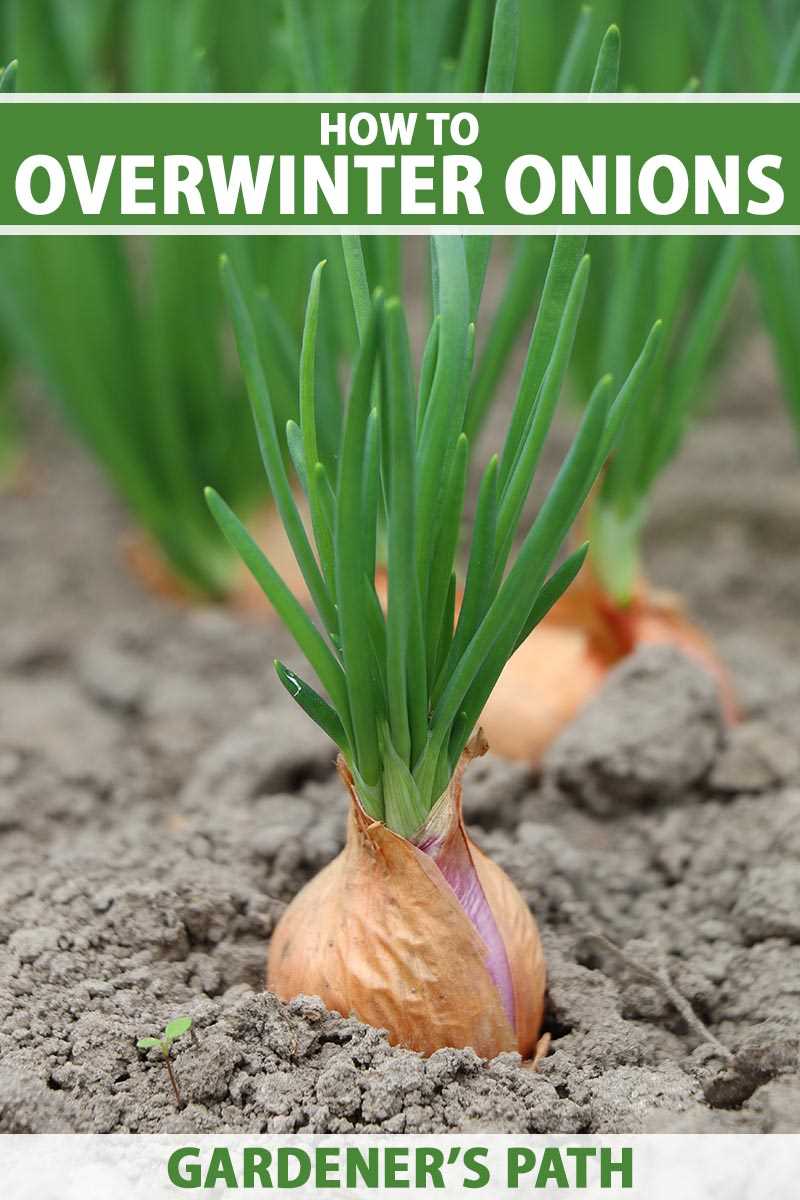
Regardless of the planting time, it’s important to provide proper care for your onions. This includes consistent watering, especially during dry periods, and regular weeding to prevent competition for nutrients. Applying a layer of mulch around the plants can help retain moisture and suppress weed growth.
Monitor the plants for any signs of pests or diseases, and take appropriate action if necessary. Onions are generally low-maintenance, but regular care will help ensure healthy growth and a bountiful harvest.
Conclusion
By planting onions at the right time and providing proper care, you can enjoy a successful onion harvest. Remember to consider your local climate and the specific variety of onion when determining the planting time. With a little attention and care, you’ll be rewarded with fresh and flavorful onions to enjoy in your recipes.
Watering Onions Properly
Watering onions properly is essential for their healthy growth. Here are some important tips to help you water your onions effectively:
1. Frequency of Watering
Onions require consistent moisture throughout their growing period. It is important to water them regularly, especially during hot and dry weather conditions.
2. Soil Moisture
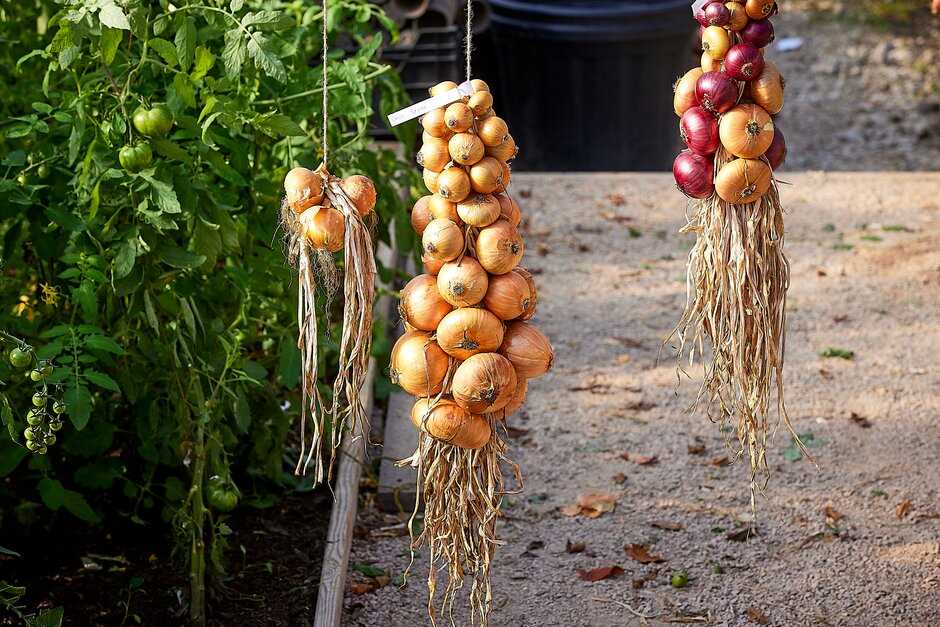
Before watering, check the moisture level of the soil. Onions prefer moist but not saturated soil. Stick your finger or a small trowel into the soil to check for moisture. If the soil feels dry to touch, it’s time to water.
3. Watering Methods
There are two common methods for watering onions:
- Surface Irrigation: This method involves applying water directly to the soil surface surrounding the onions. Avoid overhead watering as it can increase the risk of fungal diseases.
- Drip Irrigation: Drip irrigation is an efficient way to water onions. It delivers water directly to the root zone, minimizing water waste and reducing the risk of foliar diseases.
4. Watering Depth
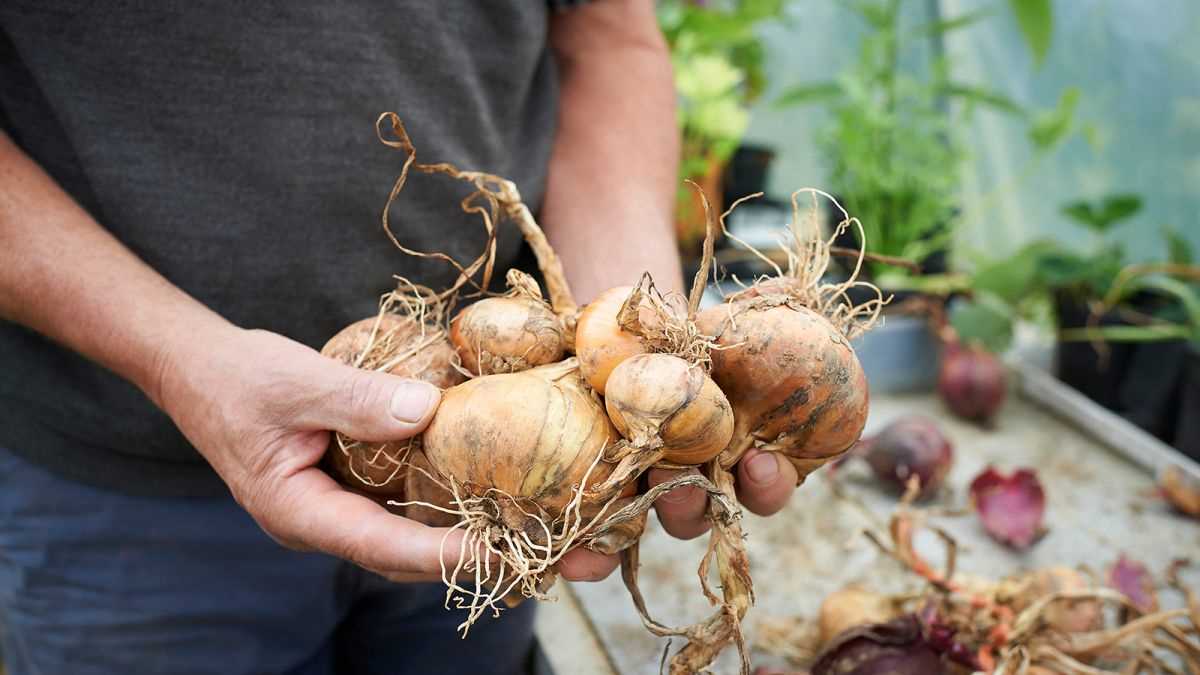
Water onions deeply to encourage root growth. The water should penetrate at least 6 inches into the soil. This helps the roots to reach deeper and absorb nutrients more efficiently.
5. Time of Day
Water onions early in the morning or late in the afternoon. This allows the foliage to dry before nighttime, reducing the risk of diseases. Avoid watering during the hottest part of the day as it can lead to excessive evaporation.
6. Mulching
Add a layer of organic mulch around the onions to help retain soil moisture. Mulching also helps control weed growth and keeps the soil temperature stable.
7. Rainfall Considerations
If your onions receive adequate rainfall, you may not need to water them as frequently. Monitor the weather and adjust your watering schedule accordingly to avoid overwatering.
8. Observation
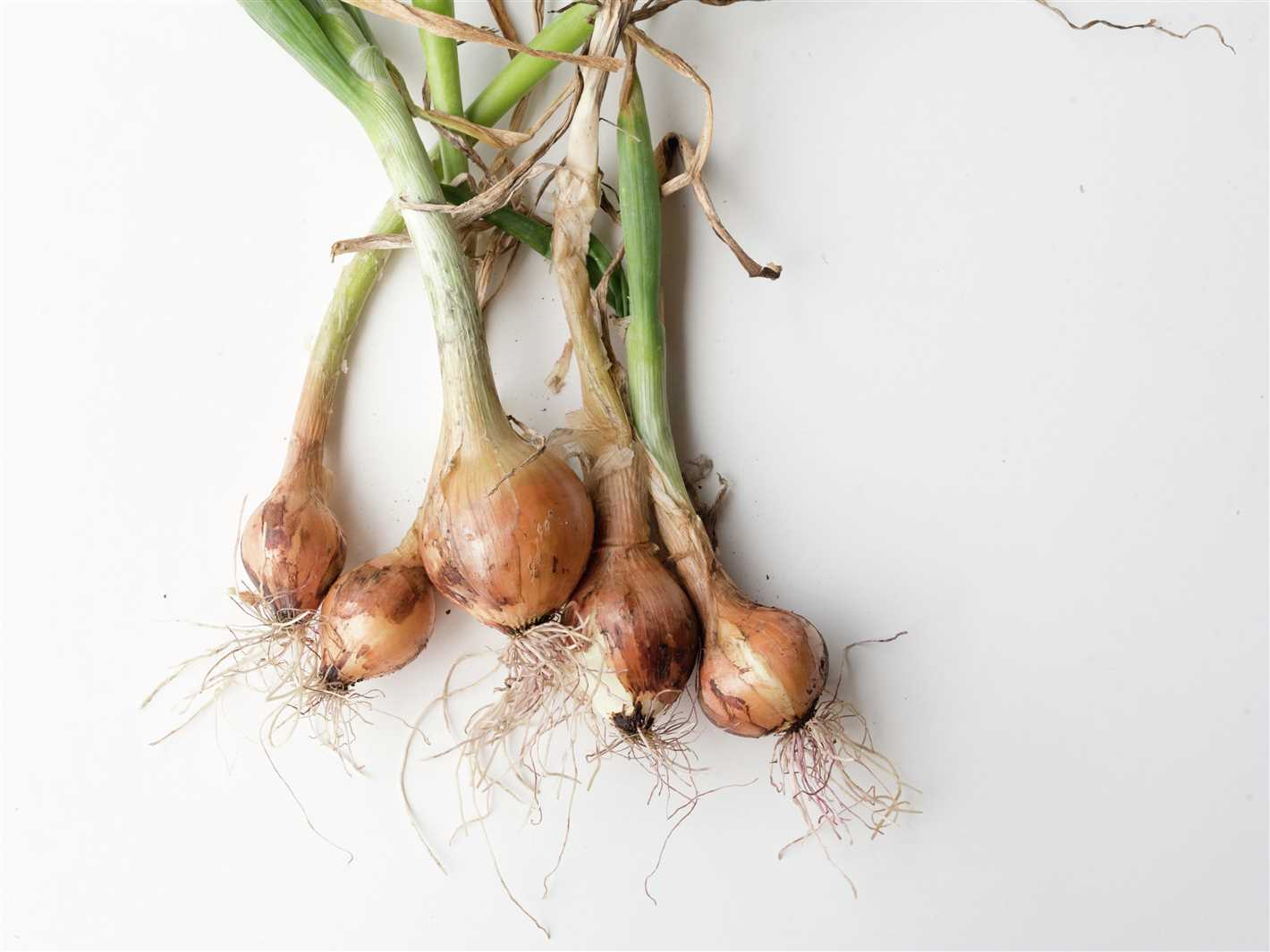
Regularly observe your onion plants for signs of overwatering or underwatering. Overwatering can lead to root rot, while underwatering can result in stunted growth and smaller bulbs. Adjust your watering practices accordingly.
By following these watering tips, you can ensure that your onions receive the appropriate amount of water for healthy growth and a bountiful harvest.
Providing Adequate Nutrients for Onion Growth
Proper nutrition is essential for promoting healthy onion growth and ensuring a successful harvest. By providing the right balance of nutrients, you can help your onions develop strong roots, lush foliage, and large bulbs. Here are some essential nutrients and how to provide them:
- Nitrogen: Nitrogen is important for vegetative growth, promoting the development of lush green foliage. Apply a balanced fertilizer with a higher nitrogen content before planting onions. This will help kickstart their growth.
- Phosphorus: Phosphorus plays a crucial role in root development, flowering, and fruiting. Incorporate a phosphorus-rich fertilizer, such as bone meal or rock phosphate, into the soil before planting.
- Potassium: Potassium helps with overall plant health, disease resistance, and bulb development. Add potassium-rich fertilizers, such as potassium sulfate or wood ash, to the soil during the growing season.
- Calcium: Calcium is important for preventing disorders such as onion tip burn and promoting strong cell wall development. Maintain adequate soil calcium levels by incorporating dolomitic lime or gypsum before planting.
- Micronutrients: Onions also require trace amounts of micronutrients such as iron, zinc, manganese, and copper. These can be provided through the use of a balanced micronutrient fertilizer or through regular foliar sprays.
It’s important to note that onions are heavy feeders and may require additional nutrient applications throughout their growth period. Regularly monitor nutrient levels in the soil and adjust fertilizer applications accordingly.
A soil test can provide valuable information about nutrient deficiencies and help you tailor your fertilization program to meet your onion plants’ specific needs.
Fertilizer Application Tips:
When applying fertilizers:
- Follow the manufacturer’s recommended application rates and guidelines.
- Apply fertilizers evenly and avoid direct contact with the onion plants to prevent burning their roots.
- Water the soil thoroughly after fertilizing to help nutrients reach the root zone.
- Consider using slow-release fertilizers to provide a steady supply of nutrients over time.
- Monitor your plants for any signs of nutrient deficiencies, such as yellowing leaves or stunted growth, and adjust your fertilization program accordingly.
Conclusion
Providing adequate nutrients is crucial for promoting healthy onion growth and maximizing your harvest. By understanding the essential nutrients onions need and how to provide them, you can ensure that your onion plants have the best possible conditions for growth.
Controlling Weeds and Pests in Onion Beds
Controlling weeds and pests is an essential task to ensure the healthy growth of onions in your garden. Weeds can compete with onions for nutrients and water, while pests can damage the leaves and bulbs. Here are some methods you can use to control weeds and pests in your onion beds:
Weed Control
1. Mulching: Apply a layer of organic mulch, such as straw or wood chips, around the onion plants. This will help suppress weed growth by blocking sunlight and reducing weed seed germination. Mulching also helps conserve soil moisture.
2. Hand weeding: Regularly inspect your onion beds and remove any weeds by hand. Be careful not to disturb the onion plants while pulling out the weeds. This method is effective but can be time-consuming, especially in larger onion beds.
3. Weed barriers: Use weed barriers, such as landscape fabric or black plastic, to block weed growth. Cut holes for the onion plants, allowing them to grow while preventing weeds from taking over. This method is particularly useful if you have a persistent weed problem.
Pest Control
1. Companion planting: Plant companion plants, such as marigolds or chives, near your onion beds. These plants can repel pests like aphids and onion flies. However, be cautious when choosing companion plants, as some can have negative effects on the growth of onions.
2. Insect netting: Cover your onion beds with insect netting to protect them from pests like onion maggots. The netting should be fine enough to prevent pests from passing through but still allow air and sunlight to reach the plants. Secure the netting tightly to exclude pests effectively.
3. Organic insecticides: Use organic insecticides sparingly to control pests, such as onion thrips or caterpillars. These insecticides should be environmentally friendly and safe to use on edible crops. Follow the instructions on the packaging carefully to avoid harming the onions or beneficial insects.
4. Crop rotation: Avoid planting onions in the same area for consecutive years. Rotate your onion beds with other vegetable crops to disrupt pest life cycles and reduce pest populations. This practice can help prevent the buildup of pests and diseases specific to onions.
| Method | Advantages | Disadvantages |
|---|---|---|
| Mulching | Suppresses weed growth, conserves soil moisture | May attract some pests if organic material is not properly composted |
| Hand weeding | Effective, low-cost method | Time-consuming, labor-intensive |
| Weed barriers | Blocks weed growth completely | Requires installation and maintenance |
| Companion planting | Natural pest repellent, adds diversity to the garden | Some companion plants may have negative effects on onions |
| Insect netting | Physical barrier, allows air and sunlight in | Requires installation and maintenance |
| Organic insecticides | Effective against specific pests, safe for edible crops | May harm beneficial insects if not used properly |
| Crop rotation | Reduces pest buildup, promotes soil health | Requires planning and rotation of crops |
By implementing these weed and pest control methods, you can ensure the successful growth of your onion plants. Regular monitoring and prompt action are critical to addressing any weed or pest issues that arise in your onion beds.
Protecting Onions from Extreme Temperatures
The onion plant is sensitive to extreme temperatures, and it is important to protect it from both heat and cold to ensure healthy growth. Here are some essential tips for protecting onions from extreme temperatures:
1. Mulching
Mulching is an effective way to regulate soil temperature and protect onions from extreme heat and cold. Apply a layer of organic mulch, such as straw, wood chips, or grass clippings, around the base of the onion plants. This will help to insulate the soil and provide a buffer against temperature fluctuations.
2. Watering
Maintaining adequate moisture levels in the soil is crucial for protecting onions from extreme temperatures. Water the onion plants regularly, but avoid overwatering, as this can lead to rotting. A consistent and even supply of moisture will help to moderate the temperature in the root zone and keep the plants healthy.
3. Shade cloth
During periods of intense heat, consider using shade cloth to protect onion plants from excessive sunlight and heat. Shade cloth can be attached to stakes or hoops to create a temporary shade structure over the onion bed. This will help to reduce the temperature and prevent heat stress on the plants.
4. Cold frames or row covers
If you are growing onions in a region with cold winters, consider using cold frames or row covers to protect the plants from frost and freezing temperatures. These structures create a microclimate around the onion plants, trapping heat and providing insulation. Make sure to remove the covers during the day to allow for proper air circulation.
5. Plant spacing
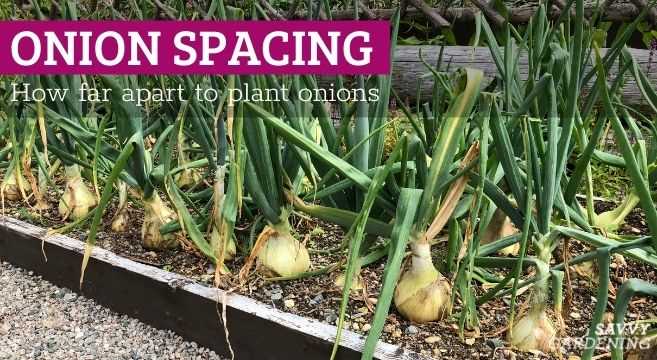
Proper plant spacing is important for promoting airflow around the onion plants and preventing heat buildup. Overcrowding can lead to increased humidity and temperature in the plant canopy, making them more susceptible to heat stress and diseases. Follow the recommended spacing guidelines for your specific onion variety to ensure adequate ventilation.
6. Harvesting on time
If extreme temperatures are expected, it may be necessary to harvest onions earlier than usual to protect them from damage. Check the weather forecast and harvest the onions before the extreme temperatures hit. Properly cured onions can be stored for several months, allowing you to enjoy your harvest without the risk of temperature-related issues.
By implementing these measures, you can help protect your onions from extreme temperatures and ensure healthy growth throughout their initial growth stage.
Harvesting and Caring for Onions After Initial Growth
Harvesting Onions
Harvesting onions is an important step in the onion growing process. The timing of when to harvest onions can greatly affect their taste, size, and storage life. Here are some tips for harvesting onions:
- Observe the foliage: When the onion’s tops have fallen over and started to dry out, it is a good indication that the onions are ready to be harvested.
- Check the size: Gently dig up one onion to check its size. Onions are typically ready for harvest when they have reached their full size and have a firm, round bulb.
- Use a garden fork or shovel: Carefully loosen the soil around the onions and lift them out of the ground using a garden fork or shovel. Be careful not to damage the bulbs.
- Cure the onions: After harvesting, allow the onions to dry in a well-ventilated area for a few days. This will help them develop a papery skin and promote better storage.
Caring for Onions after Harvest
Properly caring for onions after harvest can help extend their storage life and maintain their quality. Here are some important steps to follow:
- Trim the foliage: Cut off the foliage about an inch above the bulb after the onions have finished drying. This helps prevent the spread of diseases and allows for better airflow during storage.
- Remove any damaged onions: Inspect the onions for any signs of damage or rot. Remove any onions that are soft or have visible damage to prevent them from spoiling the rest of the crop.
- Store in a cool, dry place: Place the cured onions in a well-ventilated container or mesh bag and store them in a cool, dry place such as a root cellar, pantry, or garage. Avoid areas with high humidity or direct sunlight, as these can cause the onions to spoil more quickly.
- Check for sprouting: Regularly check the stored onions for any signs of sprouting or rot. Remove any sprouted onions to prevent them from affecting the quality of the remaining onions.
By following these harvesting and post-harvest care guidelines, you can ensure that your onions stay fresh and delicious for an extended period.
“Question-Answer”
What are the essential tasks for caring for onions during initial growth?
During the initial growth of onions, it is essential to provide them with proper watering, fertilizer, and weed control. Additionally, ensuring they receive adequate sunlight and managing pests are crucial tasks for their care.
How often should I water onions during their initial growth?
Watering onions during their initial growth is important, and they should be watered regularly. It is recommended to provide them with about 1 inch of water per week, either through rainfall or irrigation.
What type of fertilizer should I use for onions during their initial growth?
When it comes to fertilizing onions during their initial growth, a balanced fertilizer with equal amounts of nitrogen, phosphorus, and potassium is recommended. You can use a 10-10-10 fertilizer or a similar formulation.
How can I control weeds in my onion patch?
Controlling weeds is important for the proper growth of onions. You can control weeds by regularly removing them manually or by using mulch to suppress their growth. It’s important to keep the onion patch free from competing weeds.
What are some common pests that affect onions during their initial growth?
Onions can be affected by various pests during their initial growth. Some common pests that attack onions include onion thrips, onion maggots, and cutworms. It is important to regularly inspect the plants and take necessary measures to control these pests.







